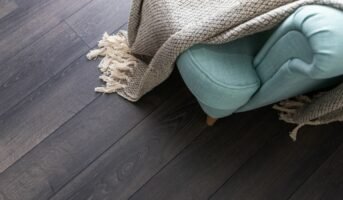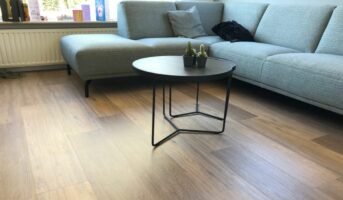When you walk into a room, one of the first things that strike you is the floor. If you don’t like anything in your room – from the décor to the wall colour to the furniture – you can easily alter everything, but the same cannot be said for the flooring. Changing your floor treatment is a difficult and time-consuming procedure, so selecting your flooring requires much thought and study. The debate between marble vs tiles would always be prevalent. You could be confused about whether to go with a tiled floor or a marble floor; therefore, we are here to help!
Marble vs tiles: Properties
Tiles and marble are relatively different in nature. They have distinct qualities. Tiles are man-made and created with properties suitable for flooring. They are formed from porcelain, clay, or ceramic. Non-porous vitrified tiles do not absorb water or other substances. This also helps to make them stain-resistant. Marble is a natural stone with porous qualities that make it susceptible to water or other things that might discolour it. Acids and alkalis harm marbles, but acids and alkalis do not affect tiles.
Marble, on the other hand, may give your rooms a luxurious impression if it is frequently cleaned and carefully maintained. Marbles can keep your flooring looking nice for a long time.
See also: All about PVC bathroom door

Source: Pinterest

Source: Pinterest
See also: Terrace roof design to learn from
Marble vs tiles: Durability
Marbles are renowned for their resilience. As a result, it’s a wonderful option if you want long-lasting flooring. Marbles, if polished and cleaned on a regular basis, may survive a very long period, even if they do turn yellowish with age. During the production process, tiles are subjected to a rigorous vitrification process, giving them the strength to last a long period.
However, vitrified tiles must be handled with care. Tiles may serve you well for the duration of their limited life, but if cracked or damaged, they must be replaced totally. Marble is a lot more forgiving material that, if thoroughly polished at regular intervals, may be your flooring for life.
Marble vs tiles: Care and maintenance
Floors are one of the most misused elements of your home – you walk on them, run on them, throw items on them, push furniture about, and drop things. So taking care of them is essential if you want them to last a long time. Your floors must be cleaned and maintained regularly, or they may become damaged. Tiles are water and abrasive material resistant; therefore, they can be simply cleaned with water and a soft cloth. Tiles do not discolour readily. Hence, they do not require much consideration if swept on a regular basis.
Marble, as a porous stone, is prone to absorbing water or abrasion by acids or alkalis and hence requires special maintenance. To eliminate stains, clean your marble floors on a regular basis with lukewarm water and a light detergent. Marble has to be polished on a regular basis to keep its gloss and lustre. You can polish it yourself or hire a professional to do it for you.
Marble vs tiles: Variety and finishings
Marble flooring is a distinct material with its own personality, and it is available in blocks, slabs, or tiles. Marbles are commonly found in white, black, green, brown, grey, and other natural colours, and various grades absorb water differently. Polished marble is used to produce a glossy surface, whilst honed, and sanded marble can be used to achieve a matte, rustic feel. Vitrified tiles are man-made, and are available in a wide range of styles, colours, printing, and textures. Tiles can be designed to look like natural materials like wood, bamboo, or even marble. Vitrified tiles are available in glossy, matte, and anti-skid surfaces and are suitable for both indoor and exterior usage.

Image: blue marble Source: Pinterest

Wood finish vitrified tiles| Source: Pinterest
See also: Vinyl flooring vs laminate flooring: Which is a better option?
Marble vs tiles: Costing
Marble is more expensive than vitrified tiles since it is a naturally occurring material. The cost of flooring will also vary according to the grade, colour uniqueness, and so on. Indian marble flooring typically costs approximately Rs 250 per square foot (including the cost of the material, labour, and cutting and polishing expenses), but Italian marble may cost anywhere between Rs 650 and Rs 1,000 per square foot.
The price of vitrified tile flooring is mostly determined by the style and brand you select. The cost of flooring (including tile, additional materials, and labour) ranges from roughly Rs 200 per square foot to Rs 300 per square foot. Nonetheless, because they are man-made, these tiles are less expensive than marble.
Marble vs tiles: Design and installation
Marble installation takes more time and is more labour demanding. Marble is rarely available in the ready-to-ship condition in most parts of India. You must first place an order, which will be followed by the cutting and grinding of marble to your specifications. Aside from the time necessary to lay marble flooring, the time required for polishing and finishing also contributes to the entire installation time.
Vitrified tiles are available in stores in ready-to-ship condition, and laying flooring in a standard-size room usually takes about 1.5 working days. These tiles also require less setup time and can be used immediately after installation. Because they are pre-polished, no finishing is necessary on-site. Because vitrified tiles can be cut by hand, they can be laid in a variety of patterns and combinations to suit your needs. The tile’s general thickness is roughly 10 to 12 mm, which minimises the total thickness of your floor.
Marble vs tiles: Aesthetic value
It’s all about the aesthetics in today’s designer world, whether it’s the décor, the wall, or the floor. The appearance of your flooring will decide the impression they make on your guests. As a result, the style and pattern of your flooring must be carefully picked to suit your rooms and the rest of the décor. Because of their luxurious appearance and regal feel, marbles have long been favoured by the privileged. The natural impression created by the grain lines in the stones and the sheen of a well-polished marble flooring communicates luxury like nothing else.
Tiles are now produced with superb finishes – both glossy and matt – and magnificent designs that have an artistic effect. However, if the grouting lines used while laying tiles are not properly laid, they might detract from the high-quality appearance. If you want to give your home a regal appearance, marble flooring is the way to go.

Clay tile| Source: Pinterest

Grey marble flooring| Source: Pinterest
Housing News Desk is the news desk of leading online real estate portal, Housing.com. Housing News Desk focuses on a variety of topics such as real estate laws, taxes, current news, property trends, home loans, rentals, décor, green homes, home improvement, etc. The main objective of the news desk, is to cover the real estate sector from the perspective of providing information that is useful to the end-user.
Facebook: https://www.facebook.com/housing.com/
Twitter: https://twitter.com/Housing
Email: [email protected]












